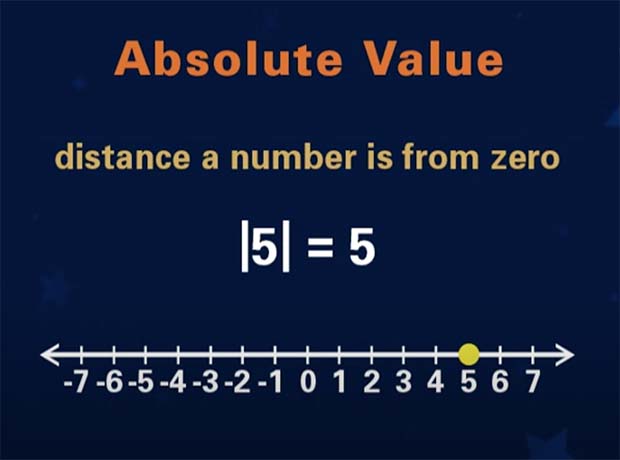
Math students who begin their math journey into absolute value usually evaluate expressions with absolute value as “always positive.” That is, until they encounter the absolute value of zero, and then their answers become “always positive or zero.”
The formal definition of absolute value is |x| = x if x ≥ 0 or –x if x < 0. The negative x confuses students. They never quite understand that it is the absolute value that is always positive or zero. Unless this misunderstanding is corrected, the situation becomes more problematic when solving inequalities involving absolute value, which can lead to unhappy teachers and muddled students who usually conclude, “we don’t like math.”
In our Elevated Math lessons we make it clear that absolute value is distance, and distance is always positive or zero. We begin lesson M3.1 with instruction and problems on negative numbers. Then we introduce the concept of opposite numbers. Finally we explain absolute value:
Here is how we do it:
Lesson M3.1 continues with an explanation of integers, how they relate on a number line, and how to order integers.
We define absolute value again in lesson A6.1. This is followed by solving basic absolute value equations. Here is a portion of that lesson:
This lesson continues with more problems and instruction that includes solving absolute value equations with one and no solutions.
Lesson A6.2 gives instruction and problems of more advanced absolute value equations. These include two-step linear equations.
Then students reach lessons A6.3 “Inequalities with ‘Absolute Value is Less Than’” and A6.4 “Inequalities with ‘Absolute Value is Greater Than.’” At the end of these lessons they have a firm grasp of the absolute value concept.
The last lesson of this module, A6.5 “Problems with Absolute Value Equations,” have scenarios where we model using an absolute value equation or inequality. Together, all these Elevated Math lessons lead to happy teachers and successful, confident students. These students “like math very much!”
